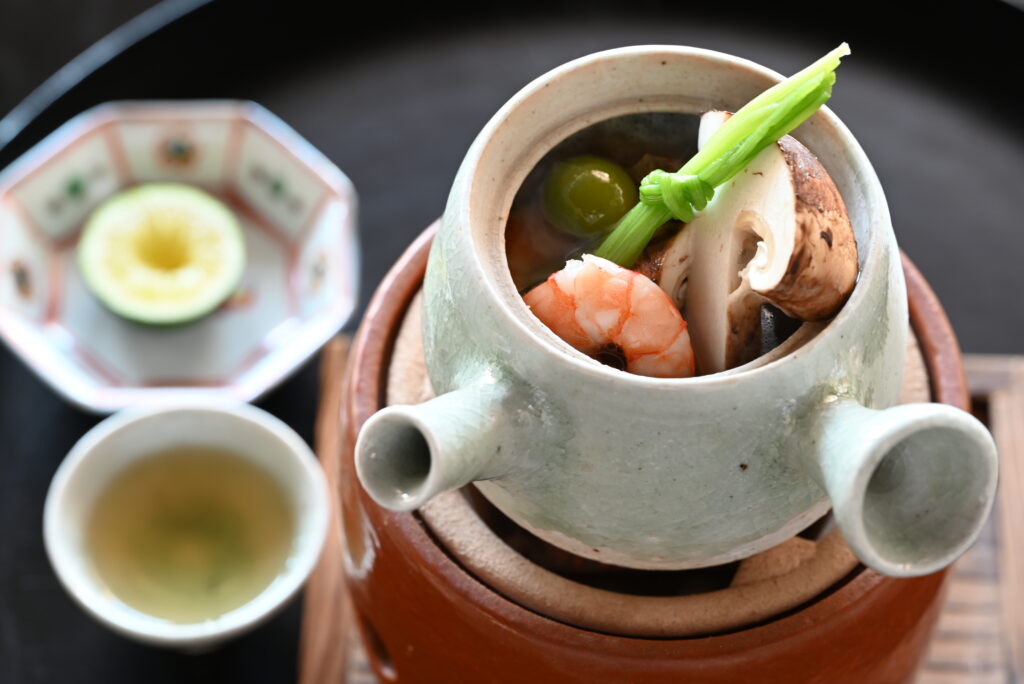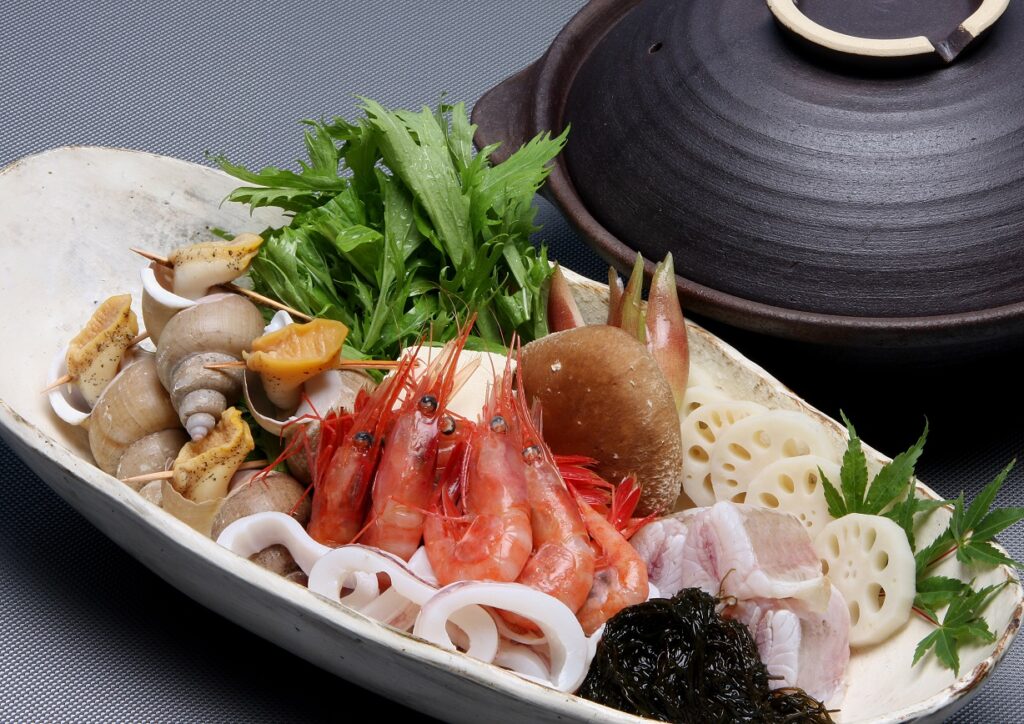2.2 Dogen: Japanese food and Zen teachings, past and present
The year is 1229, and Dogen doesn’t know what to do. He’s one of the monks in charge of a Zen Buddhist monastery in medieval Japan. It’s freezing outside as well as indoors in the dead of winter, sweltering hot in summer, clammy and wet during rainy seasons. […]
He has decided to write a guide on how to cook with instructions that will bring Zen teachings and principles into the kitchen. But how to go about it? Healthy? Balanced? Nutritious? Delicious? (page 165)
Sachiko: Dogen is a 13th-century Zen priest and the founder of the Soto曹洞宗 school of Buddhism and of Eiheiji Temple永平寺, which is located in Fukui Prefecture福井県, about forty minutes by car from Yamashiro Onsen. It is a magnificent temple that is often visited by many people. I have visited it several times too. Scott, have you been there?
Scott: No, I forgot that it is so close to you!
Sachiko: I was born and raised in the city of Kanazawa金沢. I’ve visited Eiheiji Temple several times since I was little. I will take you there next time! Last time I went there, it was with my friend Julia from Long Beach near Los Angeles and my husband Kazunari. Julia was very inspired by Zen atmosphere. After visiting the temple, we also went to a famous sake brewery called Kokuryu黒龍 and had delicious soba at restaurant called Kenzo Sobaけんぞう蕎麦 sake and soba are nice adds-on to the temple visit!
What did Dogen do? “Dogen wrote that there are five flavors, five colors, and five ways to cook,” Chef Masahiko Miura, of Mizuki restaurant in Kyoto, told me. “Five flavors: kan (sweet), ku (bitter), kan (salty), san (sour), and shin (spicy). Five colors: aka (red), ao (green), ki (yellow), shiro (white), and kuro (black). Finally, five ways to cook: niru (simmer), mus (steam), ageru (fry), yaku (grill), and nama (raw).” (page168)


For me, Dogen and Eiheiji were famous for Zazen shikantaza 座禅只管打坐 (single-minded sitting), and Dogen’s most famous book KyoGyoShinSho教行信証 which is still mentioned on school textbooks. Before reading your book I didn’t know about Tenzo Kyokun and I also didn’t know the word tenzo典座 , which means head cook. Eiheiji temple is well known for Zazen meditation, but Dogen’s book on cooking Tenzo Kyokun is not well known, so I searched on the internet and found an interesting YouTube video. In it, you can see some young Zen monks working in the kitchen and the tenzo, the monk in charge of the kitchen. Their day begins at 2:30 a.m., while the other monks are still sleeping. Every day, the nine monks that serve in the kitchen prepare three meals for more than two hundred people. They almost do not have any day off. According to the video, Dogen said he considered the tenzo to be the most important monk – how impressive! He said that the work in the kitchen can be Zen training, just like Zazen meditation and sutra chanting! Before reading your book, I considered the monks cooking in the kitchen ranking lower than those devoted to mantra or sutra reciting. But Dogen said they are all the same, if not monks-cooks are even more important. I was surprised to learn that at Eiheiji, the tenzo and the nine monks working in the kitchen still adhere to Dogen’s teaching following the Tenzo Kyokun which was written eight hundred years ago – such a long time ago! Scott, do you have any comment?
Scott: Well, it’s fascinating. It is really fascinating. It’s exactly what you said: that it’s pretty amazing that these ideas from eight hundred years ago are still being used. And I think it tells you how important they are. And I think what is interesting too is that they are very focused, and they are very simple but simple in the best way, in that they are very clear, very, very clear. They are very good guidelines and it is interesting to me that people continue making use of them. It is amazing.
Sachiko: Thank you for introducing the Tenzo Kyokun.
Scott: Many people think that my book Why Be Happy? is like a guide, but it’s really a way of life, it is something that you do every day, it’s a practice, and it’s not a religion, it’s more a way of seeing the world, you know. It may be hard for people to understand that, and I suggest that one consider that people do this in Japan, it’s not that Japanese think of what they are doing, but rather that it’s a way of seeing things, a way of behaving, and it requires every day practice. It’s interesting what you say, that it is something that takes place every day, or what you try to do it every day.





